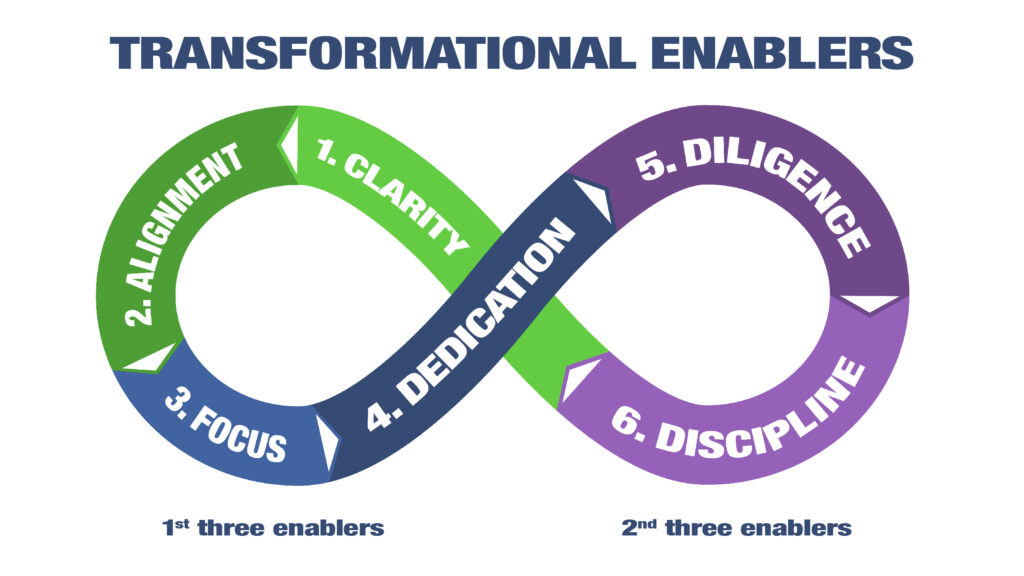A recent article in the Harvard Business Review provided the results of research on the success of corporate (business) transformations.
By Dan Hurley
Among the conclusions was that transformations are more difficult than thought. In fact, the results of that research indicate that 78% of business transformations are doomed to fail.
Definition of “Transformation”
So, what is meant by the term transformation? The team conducting the research defined “transformation” as a fundamental shift in the way that an organization conducts business, resulting in economic or social impact. That definition would cover just about any major program, process, or practice intervention in the business. The question then becomes, “What can be done to facilitate successful transformations?”. We, at Cultures That Work, would suggest the accomplishment of what we call the “Six Transformational Enablers”.
Six Transformational Enablers (STE)
The STE provide the lubrication required to overcome the friction associated with any effort to change the status quo or the way business has been done that is met during transformation efforts. This article will merely introduce the STEs. Each Enabler will be addressed in detail in subsequent articles.
So, let’s get to the Enablers. The Six Transformation Enablers are Clarity, Alignment, Focus, Dedication, Diligence, and Discipline. We will address the first three in this article due to space. In the next newsletter, we will address the last three.
The first Enabler, and the order is important, is Clarity. It is amazing how frequently, and to a greater extent, clarity is missing in our efforts to transform aspects of our business. As an example, ask the question, “What do you want?”, of yourself. That question usually incites more questions. Such as, “What does that mean, what do I want?” or “What do I want about what – work, life, family, etc.?”. I’ve found over 30 years of working with owners and executives that most cannot clearly, and that is the key, articulate an answer to that seemingly simple question.
If such a simple question, yet very difficult by experience, creates such confusion, what does the effect of such a lack of clarity do to a business? My experience tells me that when left with a void in clarity, people will fill the void with their own meaning. This is not a good thing. No wonder that Peter Drucker said, “Only three things happen naturally in organizations: friction, confusion and under performance. Everything else requires leadership.” That suggests that clarity is a primary responsibility of leadership and management.
The second Enabler is Alignment. Alignment cannot be achieved without clarity. Alignment which implies a state of agreement or cooperation among persons or a group, is critical to the accomplishment anything. Without alignment, efforts get off track quickly. Misalignment is a primary contributor to the friction, confusion and underperformance Drucker refers to in his quote.
The third Enabler is Focus. Focus is the ability to concentrate on ONE thing until that concentration is no longer necessary to achieve the desired result. As you can imagine at this point in the article, Focus cannot occur without Alignment which directs our focus on what is both urgent and important. And, as we already saw, Alignment cannot occur without Clarity.
Well, my intention was to share my thinking on enablers that would significantly contribute to the success of any transformation that a business would undertake. As previously indicated, the last three Enablers, DEDICATION, DILIGENCE AND DISCIPLINE will be addressed in the next newsletter. So, stay tuned as we prepare to take the journey to a better understanding of the formula for achieving a successful transformation together. I look forward to sharing these concepts with you next time. Your thoughts are most welcome. We are all growing (learning) or dying (maintaining the status quo). I’m still growing so, let’s learn together – you from me and me from you. Until next time…











